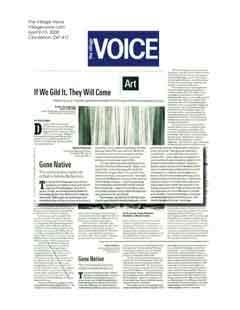
Ashley Bickerton: Gone Native
Bali's Remarkable Hybridist
By Leslie Camhi
Ten art fairs (the Armory and nine satellites) opening in one week can inspire anyone with a desire to flee to the tropics. Once you'd arrived, though, you'd find that Ashley Bickerton had already gotten there. Bickerton first made his name in the 1980s as part of a splashy quartet of artists (including Jeff Koons) whose sly send-ups of commodity culture made them darlings of the then-booming market. The crash-and-burn '90s found the Barbados-born painter nursing his wounded career in various remote locations, eventually settling on the Indonesian island of Bali.
"You say that I am wrong for staying away too long from the center of the art world," Gaugin, art's original exile, wrote to his long-suffering Danish wife from his refuge in Tahiti. "The center of my art world is in my head, not anywhere else." One might say as much for Bickerton. The remarkable works on view at Lehmann Maupin—eight large paintings set in elaborately carved wooden frames, and two bronze sculptures—depict an inner reality, a monstrous hybrid of exotic beauty, expatriate rapaciousness, and end-of-the-world angst.
The canvases, in particular, are jarring fusions of painting and digitally altered photographs, where photorealist veracity combines with surreal color, scale, and content. They depict our artist/hero/sexual tourist—a man with Caucasian features and blue skin—gone native with a vengeance. In one, he writhes in agony beneath a red devil, in the throes of some unnamed addiction. Elsewhere, beneath a green sky dotted with bloodshot yellow clouds, he demonically proffers exotic fruits while surrounded by multihued, mostly naked native women. (Another canvas shows off the squalling brood he's fathered with one of them.) The frames, inlaid with mother-of-pearl and coins and carved with touristy scenes drawn from island life or mythology, are spotted with holes, as if the painting's very status as an art commodity were threatened with extinction. The work as a whole confronts our voracious desire for beauty with the mirror of its deeply corrupting influence.
